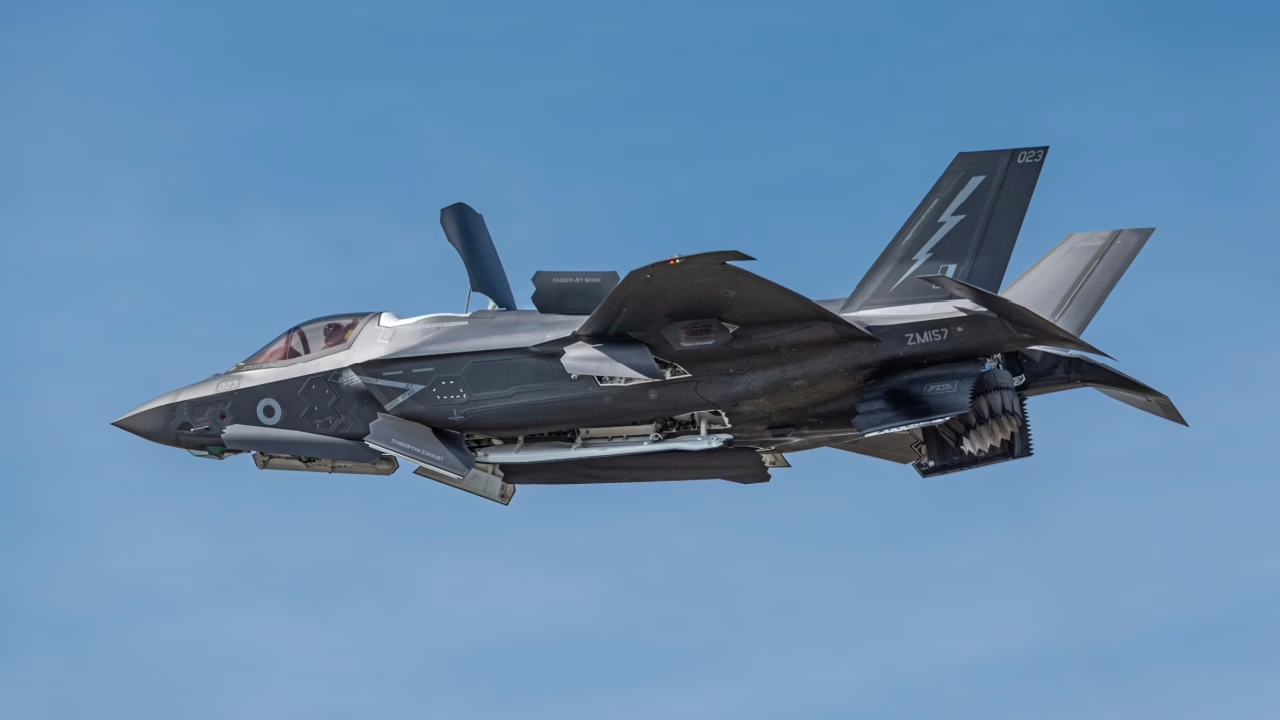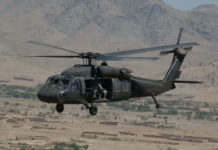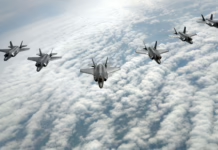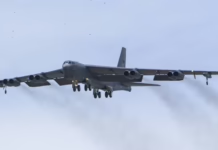The UK’s decision to acquire 12 additional Lockheed Martin F-35A fighters demonstrates the continued international appeal of the American-made stealth aircraft and reinforces NATO’s nuclear deterrence strategy.
The United Kingdom announced plans to purchase 12 F-35A Lightning II fighter jets capable of carrying both nuclear and conventional weapons, marking a significant expansion of the Lockheed Martin-built aircraft’s role in NATO’s nuclear deterrence mission.
The announcement, made following a NATO summit in the Netherlands on June 24-25, 2025, represents what the British government described as “the biggest strengthening of the UK’s nuclear posture in a generation, complementing the UK’s existing sea-borne deterrent.”
The new F-35A aircraft will be stationed at RAF Marham as part of Britain’s long-term commitment to acquire 138 F-35s throughout the program’s duration. The UK currently operates approximately 36 F-35s in its fleet.
Strategic Shift to Cost-Effective Variant
In a cost-conscious decision, Britain opted for the conventional takeoff F-35A model instead of the more expensive F-35B short takeoff and vertical landing variant. This choice is expected to reduce costs by up to 25% per aircraft, delivering significant savings for British taxpayers while maintaining full nuclear capability.
The acquisition aligns with Prime Minister Keir Starmer’s commitment to reach NATO’s goal of allocating 5% of the UK’s GDP to national security by 2035. “In an era of radical uncertainty we can no longer take peace for granted, which is why my government is investing in our national security, ensuring our Armed Forces have the equipment they need and communities up and down the country reap the benefits from our defence dividend,” Starmer said.
Expanding NATO Nuclear Mission
The UK joins seven countries, including the United States, Germany, Belgium, and Italy, that already deploy dual-capable F-35 aircraft as part of NATO’s nuclear deterrence strategy. The addition reinforces the alliance’s nuclear posture, which relies on U.S. nuclear weapons forward-deployed in Europe and infrastructure provided by NATO allies.
According to Downing Street, the F-35A acquisition “reintroduces a nuclear role for the Royal Air Force for the first time since the UK retired its sovereign air-launched nuclear weapons following the end of the Cold War.” Since 1969, Britain’s nuclear deterrent has been entirely sea-based, consisting of four Vanguard-class submarines maintaining continuous at-sea patrols.
The Center for Arms Control and Non-Proliferation estimates the UK possesses approximately 225 nuclear weapons, with 120 operational and only 40 deployed at any given time.
Industrial Benefits
The F-35 program continues to support substantial employment in the UK, sustaining more than 20,000 jobs since the first aircraft delivery in 2012. Over 100 British firms contribute to the F-35 supply chain, including major aerospace companies such as BAE Systems, Rolls-Royce, GE Aviation (UK), Honeywell UK, Martin Baker, MBDA, QinetiQ, Leonardo UK, Ultra Electronics, and EDM Limited.
Rolls-Royce supplies the LiftSystem for the F-35B variant, demonstrating the deep industrial cooperation between American and British aerospace companies in the program.
The Strategic Defense Review acknowledged that the United Kingdom faces a new era of heightened threats, marked by growing nuclear confrontation risks, prompting the government to expand its nuclear capabilities beyond the maritime domain through the F-35A acquisition.

Key Takeaways
- The UK’s purchase of 12 F-35A fighters expands NATO’s nuclear-capable aircraft fleet to eight nations
- Britain chose the cost-effective F-35A variant over the F-35B, saving up to 25% per aircraft
- The acquisition marks the Royal Air Force’s return to nuclear missions after Cold War retirement
- More than 20,000 UK jobs depend on the F-35 program, with over 100 British companies participating
- The move supports NATO’s broader nuclear deterrence strategy amid rising global security threats








